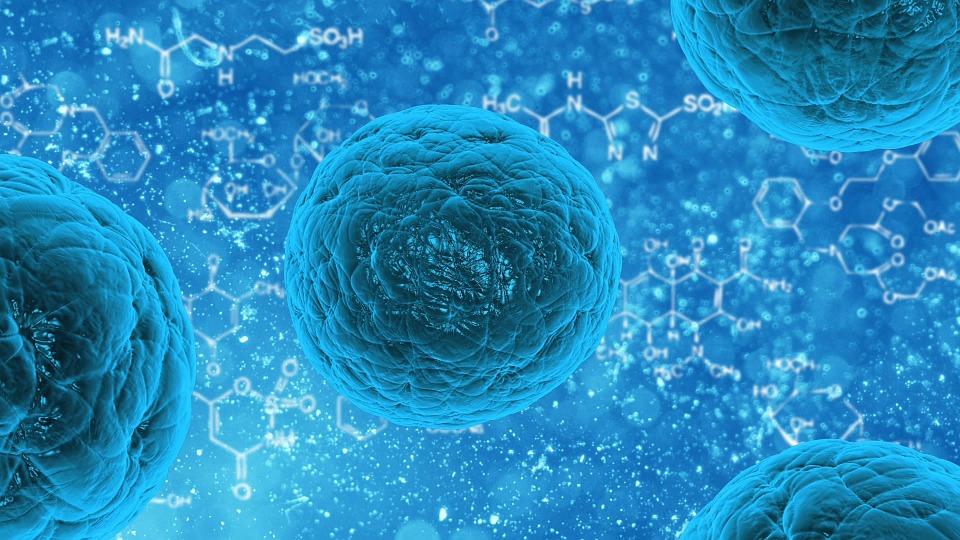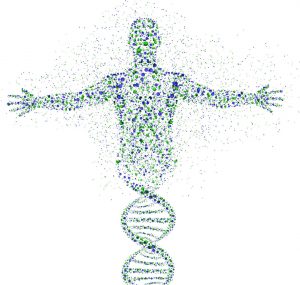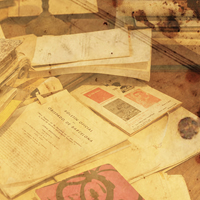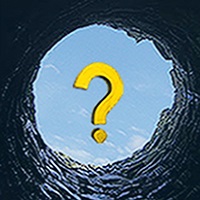
What can a simple cell organism teach us about the One who set the world in motion?
Each person begins as a single cell, or what scientists refer to as the simple cell organism, formed by the joining of the mother’s egg and the father’s sperm. That single cell contains the digital code to make thousands of other kinds of cells—from fat cells to bone cells, from brain cells to lung cells. There are muscle cells, skin cells, vein cells, capillary cells, and blood  cells. From that one original cell, the human body will produce approximately 30 trillion cells conducting a variety of functions.
cells. From that one original cell, the human body will produce approximately 30 trillion cells conducting a variety of functions.
In the first half of the 20th century, scientists still assumed that the cell was a fairly simple blob of protoplasm which is why it is considered a simple cell. Without electron-scanning microscopes, x-ray crystallography, and other technologies, the cell was treated as a “black box” that mysteriously performed its various functions—an unobservable collection of “gelatin” molecules whose inner workings were unknown.
Through the marvels of 21st-century technology, scientists now understand the following:
Although the tiniest bacterial cells are incredibly small, weighing less than 10-12 grams, each is in effect a veritable micro-miniaturized factory containing thousands of exquisitely designed pieces of intricate molecular machinery, made up altogether of one hundred thousand million atoms, far more complicated than any machinery built by man and absolutely without parallel in the non-living world.1
Each microscopic cell is as functionally complex as a small city. When magnified 50,000 times through electron micrographs, we see that a simple cell is made up of multiple complex structures, each with a different role in the cell’s operation. Using the city comparison, here’s a chart that reveals the awesome intricacy and design of a typical cell:
| City | Cell |
| Workers | Proteins |
| Power Plant | Mitochondria |
| Roads | Actin fibers, Microtubules |
| Trucks | Kinesin, Dynein |
| Factories | Ribosomes |
| Library | Genome (DNA, RNA) |
| Recycling Center | Lysosome |
| Police | Chaperones |
| Post Office | Glgi Apparatus |
As we delve further into the cellular world, technology is revealing black boxes within black boxes. As science advances, more of these black boxes are being opened, exposing a world of enormous complexity that has pushed the theory of evolution to a breaking point.2
At the moment of conception, a fertilized human egg looks like a simple, single-celled blob no bigger than a pinhead. However, we now know that blob contains enough complex code to fill 1,000 500-page books with print so small that it would take a microscope to read it.3
Through the marvel of DNA, every single human trait is established at the moment of conception.
single human trait is established at the moment of conception.
Within hours, that cell starts reproducing and grows a system to move the fertilized egg (now called a “zygote”) towards the uterus. Within six days, the original simple cell (now called an “embryo”) has reproduced its library of information over 100 times. Ultimately, that original blob of gelatin will divide into the 30 trillion cells that make up the human body. At that point, if all the DNA chemical “letters” were printed in books, it’s estimated those books would fill the Grand Canyon fifty times!4
Wow! If the cell is that complex, what about the “simple” organs made up of these cellular structures? Now that we can view organisms using the latest technology, is there really such a thing as “simple”?
What about the human heart? It’s a miraculously efficient and durable pump that no engineer could dream of producing.
What about the human brain? It’s a legitimate computer system operating 1,000 times faster than the latest supercomputer and with more connections than all the computers, phone systems, and electronic appliances on the entire planet.5
What about the human eye, ear, and lungs? What about the digestive tract, reproductive system, and immune response? How can we logically explain the random and gradual development of these complex systems?
In light of 21st-century science and technology, what would Charles Darwin say? Actually, he addressed this eventuality in his  original theory:
original theory:
If it could be demonstrated that any complex organ existed which could not possibly have been formed by numerous, successive, slight modifications, my theory would absolutely break down.6
- Michael Denton, Evolution: A Theory in Crisis, Adler & Adler, 1986, 250.
- Michael J. Behe, Darwin’s Black Box: The Biochemical Challenge to Evolution, Simon & Schuster, 1996, 18.
- A. E. Wilder-Smith, The Natural Sciences Know Nothing of Evolution, T.W.F.T. Publishers, 1981, 82.
- Mark Eastman and Chuck Missler, The Creator Beyond Time and Space, T.W.F.T. Publishers, 1996, 84.
- Eastman and Missler, The Creator Beyond Time and Space, 80.
- Charles Darwin, On the Origin of Species by Means of Natural Selection, or the Preservation of Favoured Races in the Struggle for Life (referred to simply as “Origin of Species“), Bantam Books, 1999 (reprint of 1859 original), 158.
Want More?
https://www.dontbeleftbehind.org
Sources: Randall Niles, www.AllAboutGOD.com, www.GotQuestions.org, and www.AllAboutTheJourney.org.










